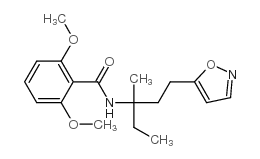| 结构式 | 名称/CAS号 | 全部文献 |
|---|---|---|
 |
3,6-二氯吡啶羧酸
CAS:1702-17-6 |
|
 |
异噁酰草胺
CAS:82558-50-7 |
| 结构式 | 名称/CAS号 | 全部文献 |
|---|---|---|
 |
3,6-二氯吡啶羧酸
CAS:1702-17-6 |
|
 |
异噁酰草胺
CAS:82558-50-7 |